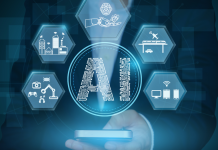Artificial intelligence has always been the gorilla in the room, which has now swept almost every device that we interact with, on a daily basis. Although naysayers had predicted a global takeover by machines and the permanent enslavement of humankind, nothing of that sort happened. In fact, all that it did was to make businesses and processes super- efficient, and also made our lives a whole lot convenient.
Marketing guru, Seth Godin says, “Artificial intelligence does a job we weren’t necessarily crazy about doing anyway, it does it quietly, and well, and then we take it for granted.”
Today, we see AI as the key technology parameter irrespective of company, industry, or business-type. And although artificial, the technology has added a much-needed personal touch to the way we shop, engage and interact with brands and businesses.
Voice powered devices like Apple’s Siri and Amazon’s Alexa or Microsoft’s Cortana are becoming a regular feature of our digital led lives. This will only increase, as these devices evolve and acquire even more skills. Most executives know that artificial intelligence (AI) has the potential to transform everything about the way business is conducted – and is slated to contribute up to $15.7 trillion to the global economy by 2030.
But the Achilles heel seems to be the deployment strategies for AI. What senior business leaders seem to be grappling with is a linear deployment strategy which permeates through the entire value chain, where it can create maximum value.
And for marketers, AI can help deliver more strategic insights and better data analysis, make marketing teams more innovative towards problem solving and help companies take more practical informed decisions.
Regardless of your industry, AI is everywhere. And it will change the way we do business. The question is: Will we be ready? Let’s take a look at some of the industries that will get decisively impacted by AI.
Banking
Contrary to popular belief, today’s AI is not yet ready to entirely replace humans, it will instead augment them, letting them move into more value-adding activities, freeing them from rote actions, making them more efficient, and performing calculations that would be physically impossible for a single person.
Read more: How Artificial Intelligence Enhances Digital Banking
Here are some of the key impact areas
-
Customer service automation
As natural language processing technology evolves, consumers will find it increasingly complex to tell between a voice bot and a human customer service executive. This stems from AI driven abilities in voice chatbots to resolve customer issues without human involvement.
-
Personalization
Banks have access to a fortune of customer data, including detailed demographics, website usage behavior and records of online and offline transactions. By utilizing machine learning to integrate and analyze information from multiple, discrete databases, banks can personalize products, services and interactions
-
Security
In the banking and payments industry security is of the highest importance. Increasingly, more and more banks are utilizing biometric data, like fingerprints, to replace or augment passwords and other forms of client verification.
-
Government
ARTIFICIAL intelligence is already helping run several governments across the world. AI is helping reduce backlogs, cut costs and speed up mundane operations.
Government agencies are using versions of AI to predict and prevent fraudulent transactions and identifying criminal suspects via facial recognition. We have explored some areas of possible AI intervention in emerging economies including the Middle East.
- Infrastructure Maintenance: A simple process can set the ball rolling — proactively monitor equipment, machinery and infrastructure, combine it with additional data points like usage metrics, images etc., to predict when and what kind of maintenance is required. Railway networks can be the first point of implementation. And this same thing holds true for most public infrastructure — roads, bridges, water systems, sewers, govt. hospitals, govt. run schools, offices etc.
- Disaster Response: It’s heart rending to hear stories of people missing or untraceable that often emerge after natural disasters. Modern technology, especially when coupled with AI, can make a significant contribution to disaster management. Aided with technology like drones, sensors and geospatial mapping. Real time data coupled with machine learning algorithms can help optimized limited resources and drive better efficacy from smaller teams. Post disaster reconnaissance, identification and prioritization of affected areas, real time tracking of individuals, etc. can all be possible.
- Agriculture: Precision farming has been hailed as the next major milestone in agriculture after the green revolution. With an ever-increasing burden of world population and diminishing farmlands because of rapid urbanization, the pressing need to increase per acre output of farmland is more essential today than ever before. And while western countries have been moving towards this for a while now, a lot still needs to be done in the developing world.
- Crime Prevention: Companies today can claim to predict almost everything about an individuals’ behavior when it comes to their likes, interests, spending pattern and likely chances of abandoning a service provider.
- Traffic Control: This one is the most obvious impact area. There is a multitude of data present on traffic flows which can be utilized for more efficient traffic management systems. For example, Milton Keynes in UK has recently announced the development and adoption of ‘smart traffic lights’ — signals that dynamically adjust themselves, based on real time traffic passing through them, monitored through sensors and cameras and some AI.
Read more: Skeptical of AI’s Future? You Can Blame the Media
Apart from benefits in operationalizing various public service aspects, AI can also have a critical role to play in policy formulation itself. It obviously comes with significant investments, but as evidenced by the private sector, the investment in data infrastructure and science, can come with very rich benefits.
Logistics
The logistics industry is, perhaps the most AI impacted industry, with data driven intelligence, taking an increasingly central role. As logistical requirements continue to become even more complex, big-data driven applications have already stepped in to streamline logistics on a global scale. AI has advanced the travel and hospitality industries – but that’s just the tip of the iceberg.
Booking trips and ordering goods online are only one part of a huge logistics equation. AI allows greater contextual intelligence, which provides the knowledge needed to reduce operations costs and inventory, and respond to clients quicker. The adoption of machine learning and other AI technologies provides new insights into a wide range of aspects, including logistics and warehouse management, collaboration, and supply chain management. According to Artificial Intelligence in Logistics, a report by DHL and IBM, the following technologies were outlined.
- Intelligent Robotic Sorting and visual inspection
- AI provides insights into enhancing supply chain management productivity
- AI for analyzing enormous volumes of data, thus enhancing demand forecasting accuracy
- AI to improve supplier selection and increase the effectiveness of supplier relationship management
- AI-Enhanced Customer Experience
- AI Improved Production Planning and Factory Scheduling
Healthcare
When it comes to our health, especially in matters of life and death, the promise of artificial intelligence (AI) to improve outcomes is very intriguing. While there is still much to overcome to achieve AI-dependent health care, data privacy concerns and fears of botched results due to machine error and lack of human oversight, there is sufficient potential that governments, tech companies, and healthcare providers are willing to invest and test out AI-powered tools and solutions.
Hospital error is the third leading cause of patient death and can be prevented by AI. According to data from the National Safety Council, 2016 was the deadliest year on American roads in a decade — with 40,000 deaths.
Read more: How Machine Learning and AI Industry initiatives are shaping the oil and gas industry
This means preventable hospital deaths due to hospital error are 11 times the number of road accidents in the United States. 86 percent of mistakes in the healthcare industry are purely administrative and preventable. Effective application of AI is projected to result in annual savings of $150 billion in the US healthcare industry alone.
The AI health market is projected to grow more than 10 times within the next five years and one AI trend to watch out for in the healthcare industry is the rise of artificial intelligence in the medical imaging.






